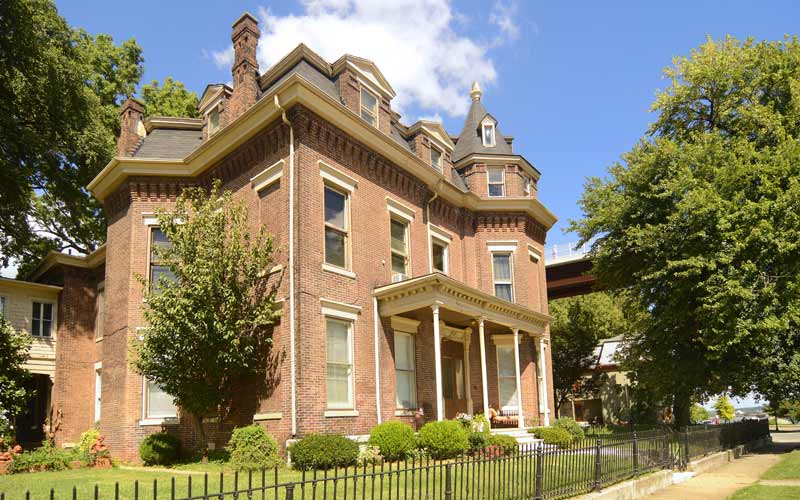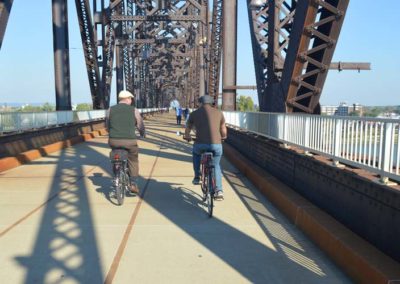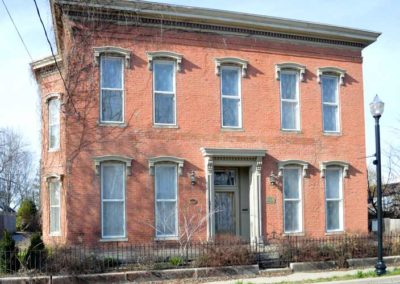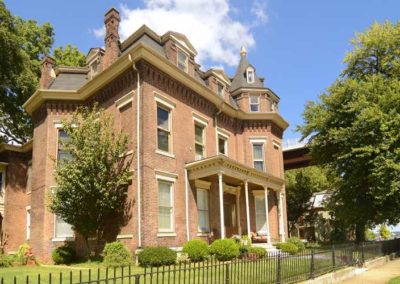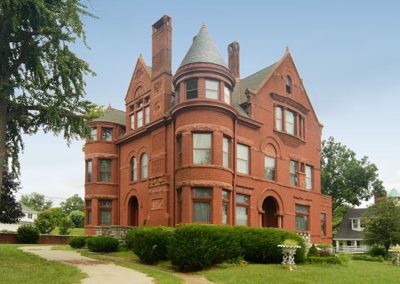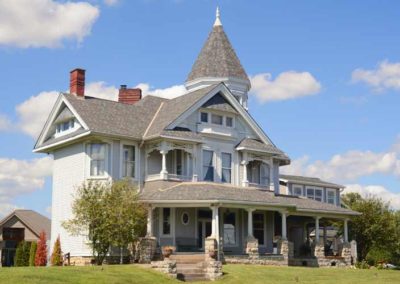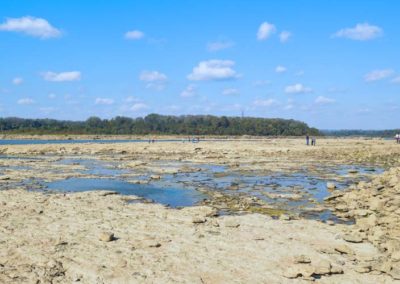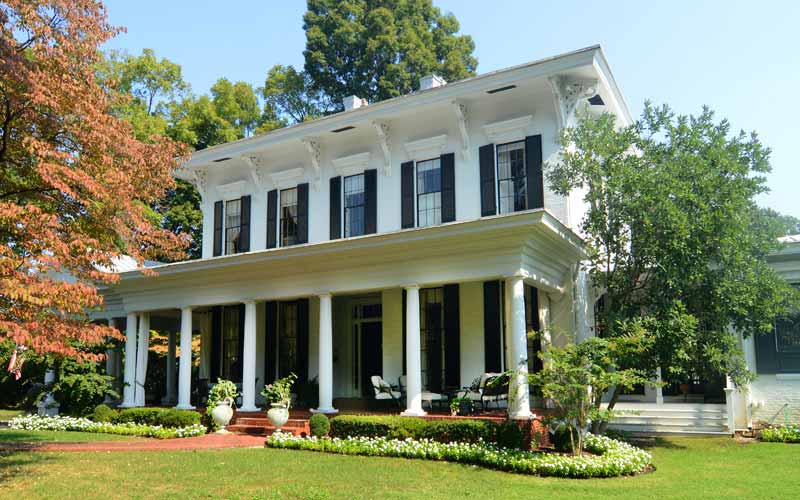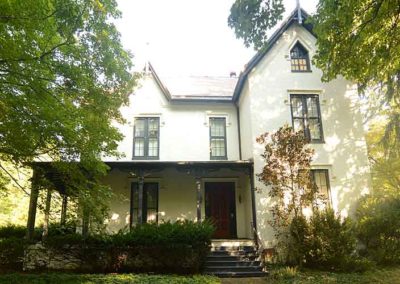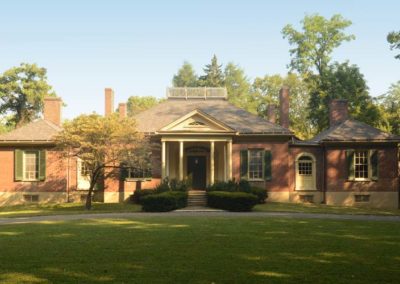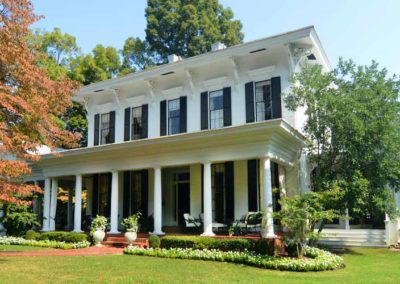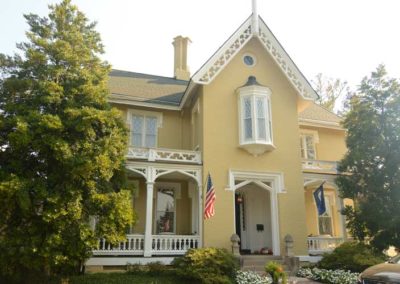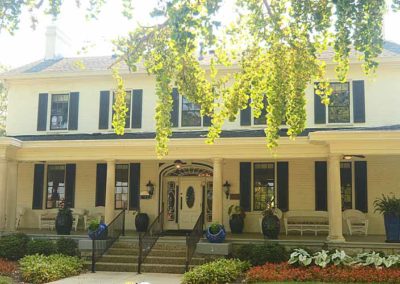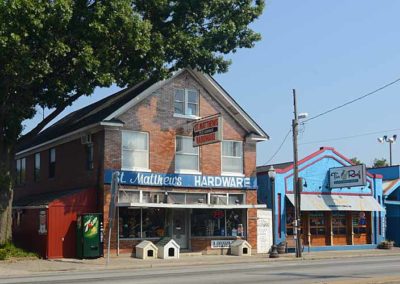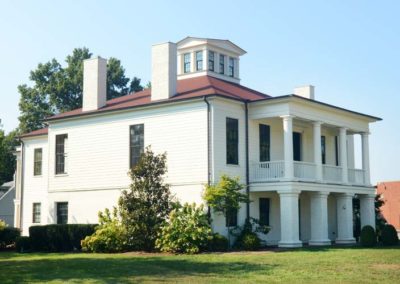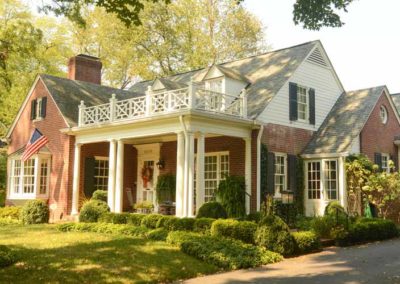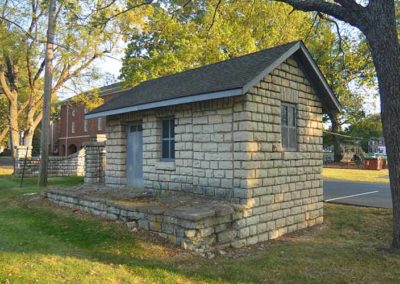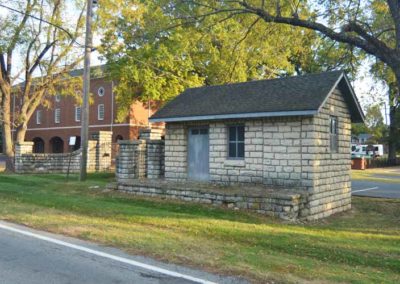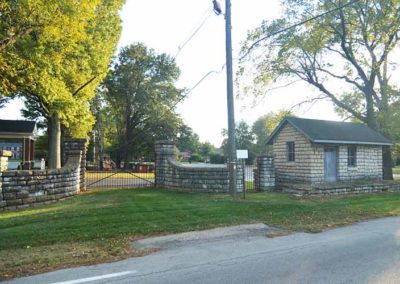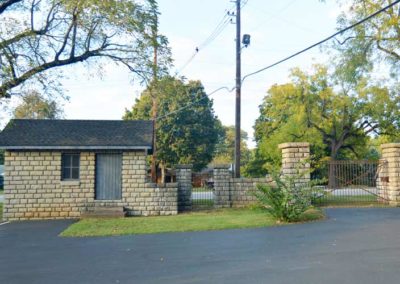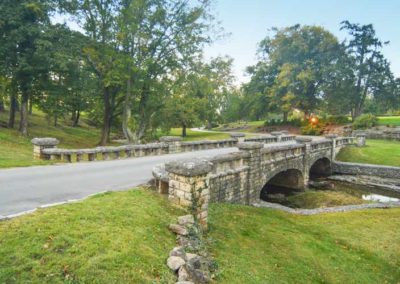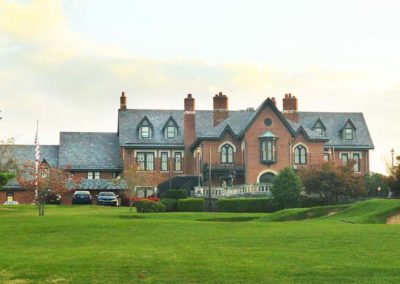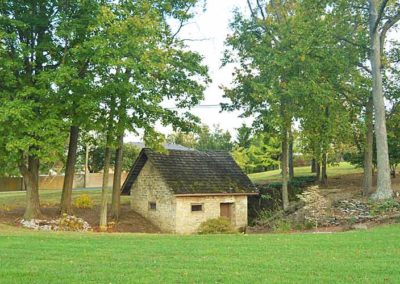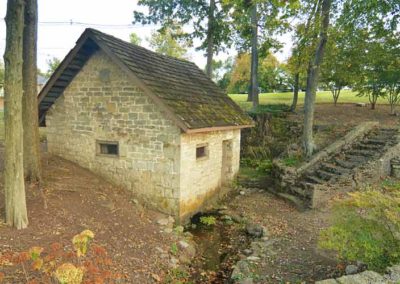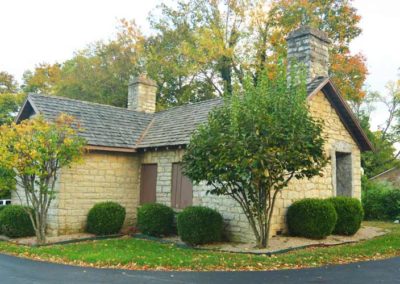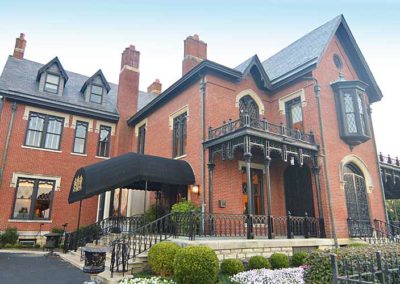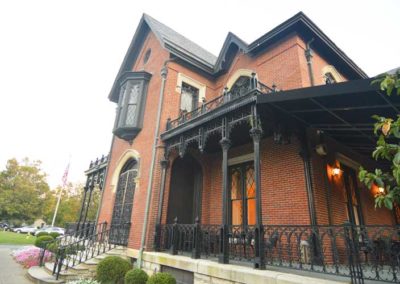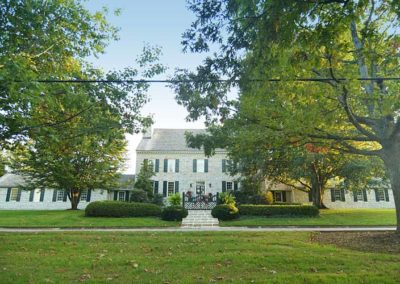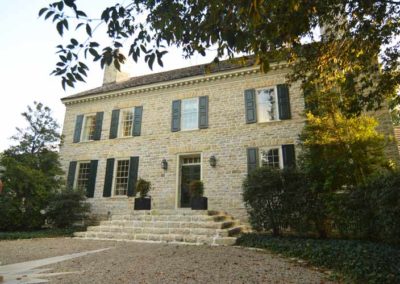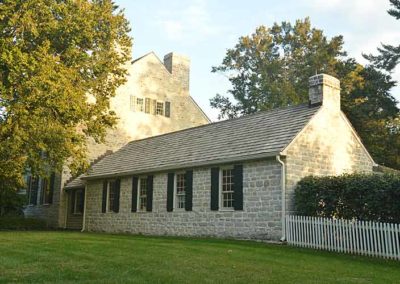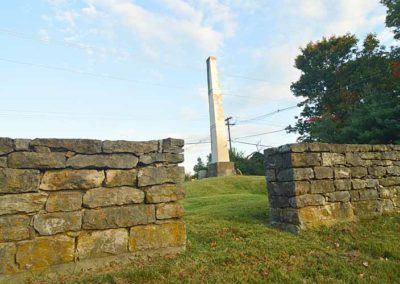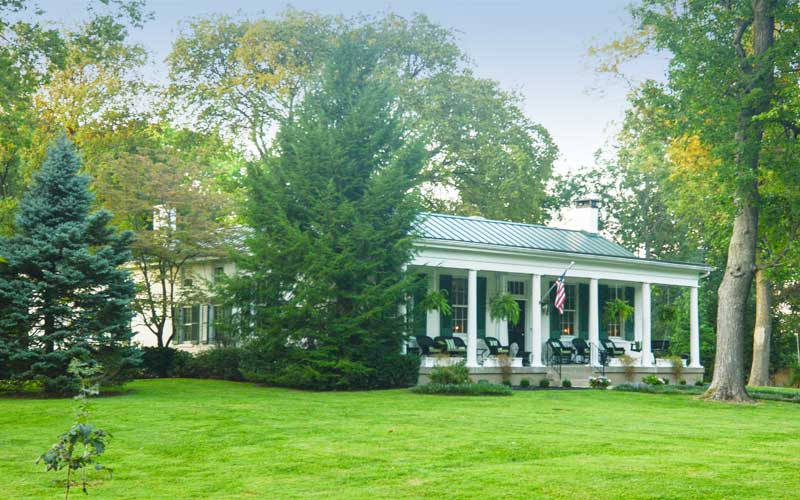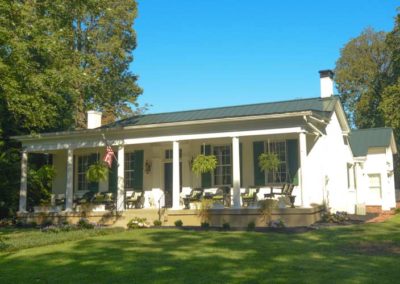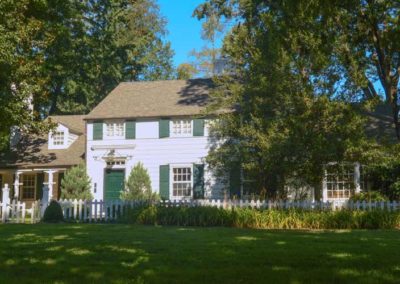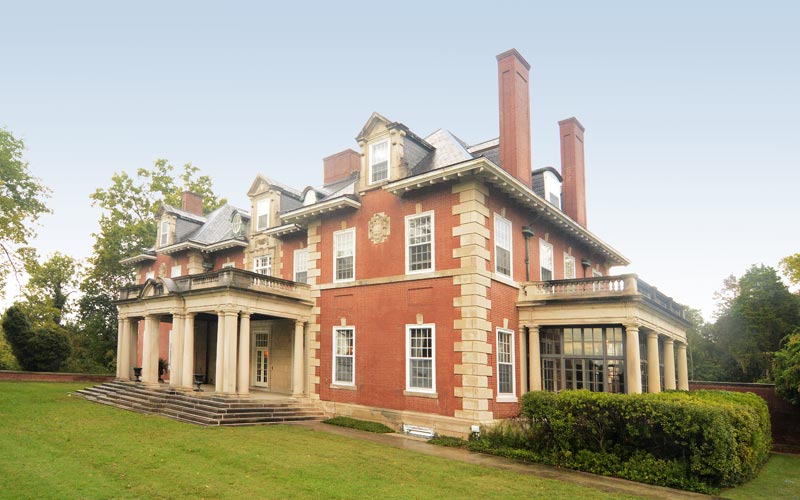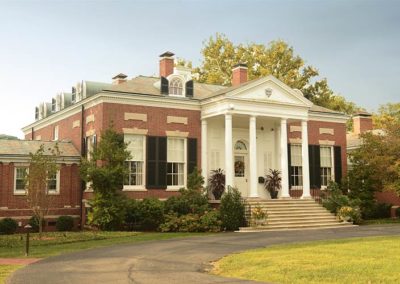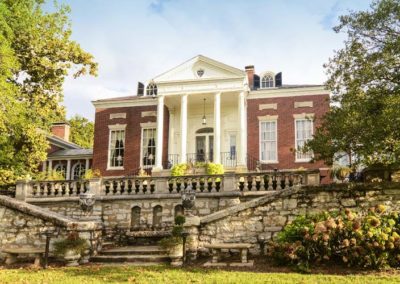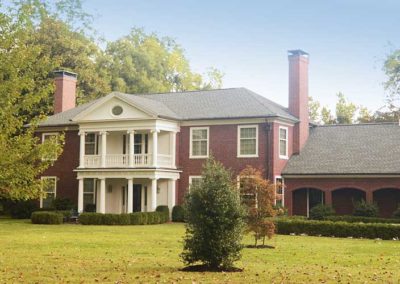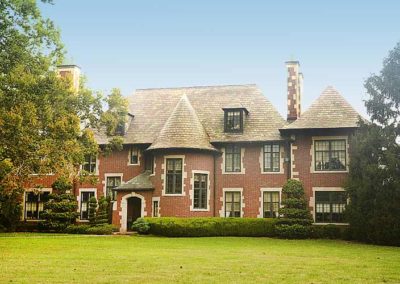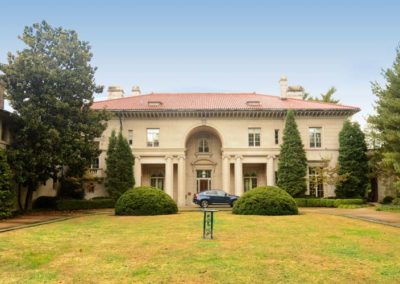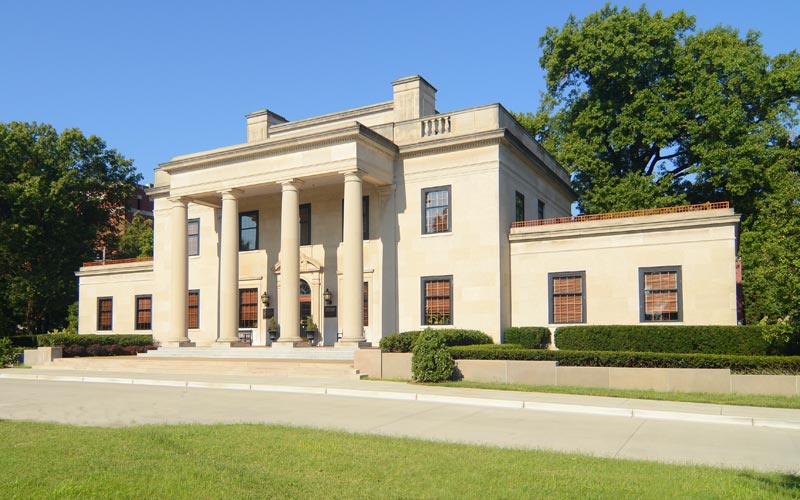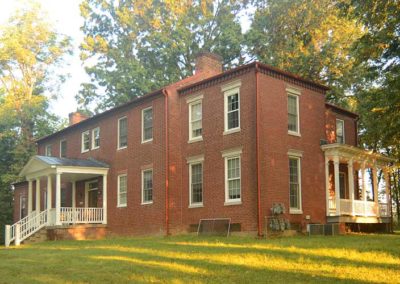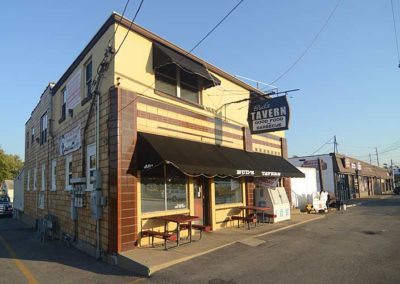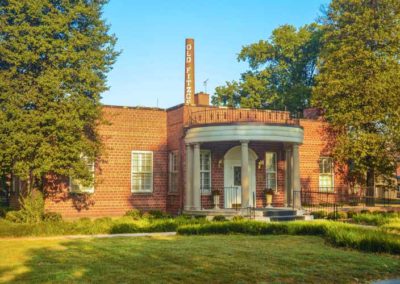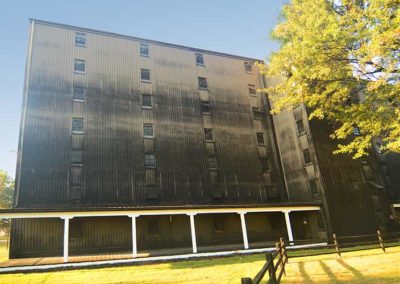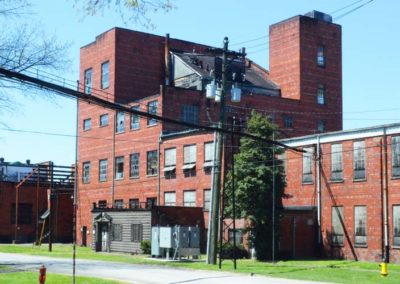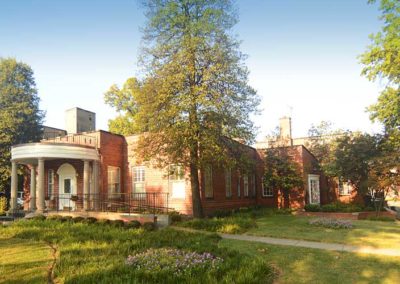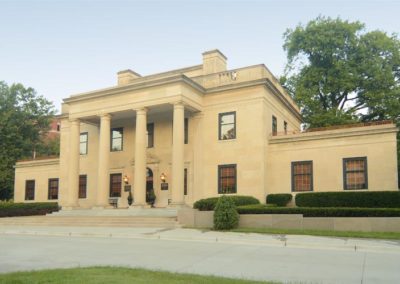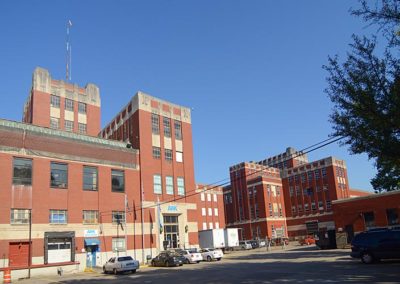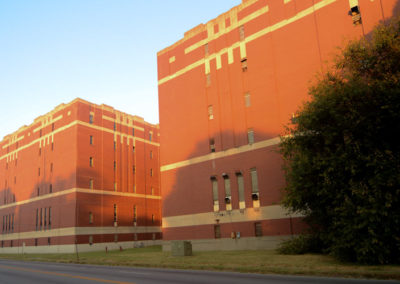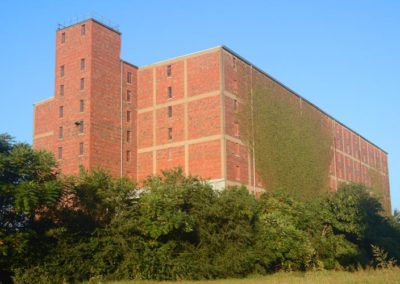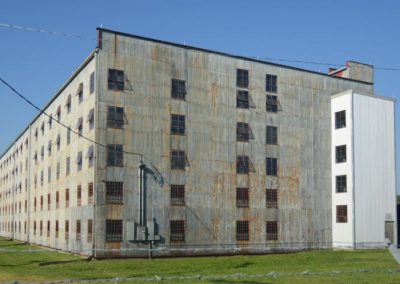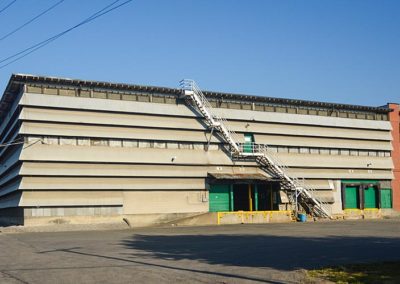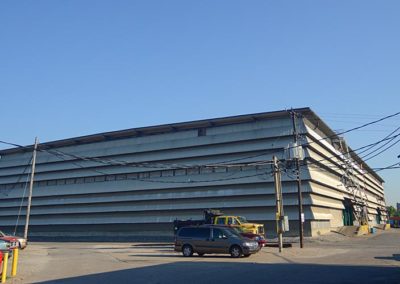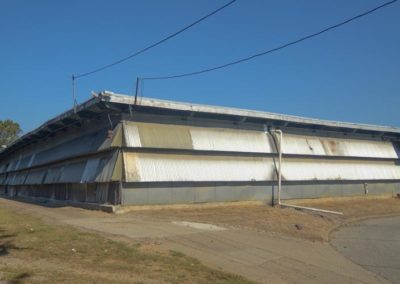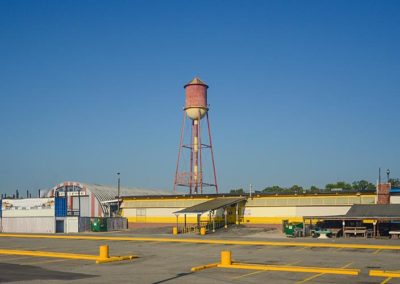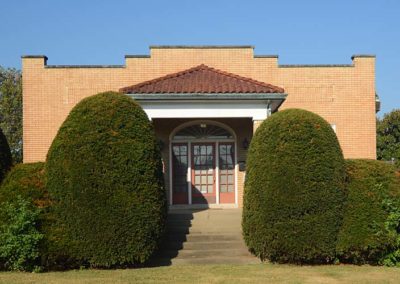First surveyed by John Floyd in 1774 and settled by Maj. William Linn, who erected Linn’s Station along the Beargrass Creek in 1779. Stations were small fortifications built for the protection of settlers from attacks by Indians and British soldiers.
The station would have been located near what is now Hurstbourne Pkwy and Shelbyville Rd. on Weicher Creek that begins near there and joins the Sinking Fork, that begins near Anchorage, to form the Middle Fork of Beargrass Creek. It was along a part of the road between the Falls of the Ohio and Fort Harrod.
Linn’s heirs abandoned the site in the 1790s. In 1789, Col. Richard Clough Anderson Sr. purchased 500 acres of land in the area and established the estate he named Soldier’s Retreat. His house suffered damage in the 1811 earthquake, and was struck by lightning and demolished in the 1840s. In the 1970s the ruins of the Anderson house were discovered and it was excavated, moved and rebuilt in 1983.
By 1818 the center section of Lyndon Hall had been built, it is now part of the Hurstbourne Country Club’s clubhouse. In 1915 the property was renamed Hurstbourne, and in 1928 the house underwent the major enlargement and remodeling that we see today.
Hurstbourne Parkway was created in 1935 when an old lane was widened. By 1965 commercial and residential development of the area had begun and it was incorporated as a city in 1982. By 1990 almost all of the land had been developed.
The streams, creek beds, and other natural features, as well as the site of Lynn’s Station, its springhouse, the Anderson house and graveyard, and several old stone out-buildings in the area have been preserved.
The Hurstbourne Foundation
www.hurstbourne.org
